 |
| Chile |
| Easter Island |
| Where they were made |
|
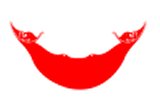 |
Rano Raraku is a volcanic
crater formed of consolidated volcanic ash, or tuff, and located
on the lower slopes of Terevaka in the Rapa Nui National Park on
Easter Island. It was a quarry for about 500 years until the
early eighteenth century, and supplied the stone from which about
95% of the island's known monolithic sculptures (moai) were
carved. Rano Raraku is a visual record of moai design vocabulary
and technological innovation, where 397 moai remain. Rano Raraku
is in the World Heritage Site of Rapa Nui National Park and gives
its name to one of the seven sections of the park.The incomplete
statues in the quarry are remarkable both for their number, for
the inaccessibility of some that were high on the outside crater
wall and for the size of the largest; at 21.6 m (71 feet) in
height, almost twice that of any moai ever completed and weighing
an estimated 270 tonnes, many times the weight of any
transported.
Tukuturi is an unusual moai. Its beard and
kneeling posture distinguish it from standard moai. The peculiar
posture of this statue is well known on Easter Island and is
called tuku turi or simply tuku. It was the posture used by the
men and women who formed the chorus in the festivals called riu,
where the posture was known as tuku riu. Typical also of the
singers was the slightly backward inclination of the trunk, the
raised head, and the goatee, all also seen in the statue.It seems
likely that this statue represents a riu singer and was made
after the production of classic statues has ceased.
Click on the picture to get a larger
version
| Getting
close to the area |
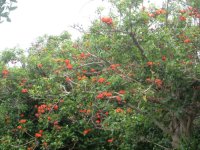 |
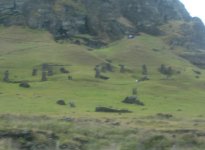 |
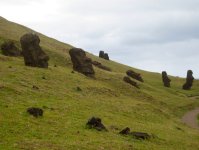 |
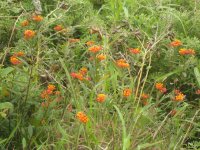 |
| Walking
around looking at all the unfinished statues |
 |
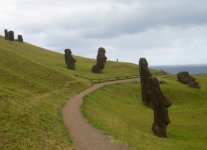 |
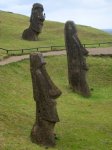 |
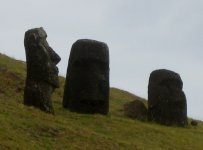 |
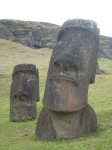 |
| Where
the statues were made |
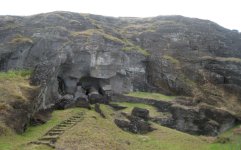 |
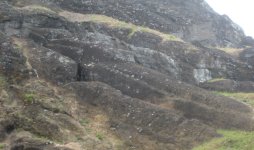 |
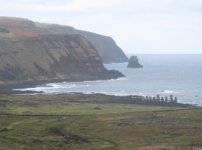 |
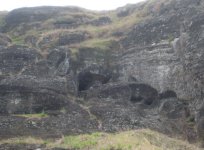 |
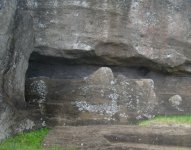 |
< Back to the index



